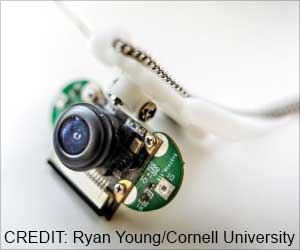, the researchers say existing vaccines may lack bits of viral material capable of triggering a holistic immune response in the human body. Based on the new information, “companies should reevaluate their vaccine designs,” says Mohsan Saeed, a NEIDL virologist and the co-corresponding author of the paper.
Saeed performed experiments on human cells infected with coronavirus. He isolated and identified those missing pieces of SARS-CoV-2 proteins inside one of the NEIDL’s Biosafety Level 3 (BSL-3) labs.
“This was a big undertaking because many research techniques are difficult to adapt for high containment levels [such as BSL-3],” Saeed says. “The overall coronavirus research pipeline we’ve created at the NEIDL, and the support of our entire NEIDL team, has helped us along the way.”
Saeed got involved after he was contacted by genetic sequencing experts at the Broad Institute, computational geneticists Pardis Sabeti and Shira Weingarten-Gabbay. They hoped to identify fragments of SARS-CoV-2 that activate the immune system’s T cells.
“The emergence of viral variants, an active area of research in my lab, is a major concern for vaccine development,” says Sabeti, a leader in the Broad Institute’s Infectious Disease and Microbiome Program.
“We swung into full action right away because my laboratory had [already] generated human cell lines that could be readily infected with SARS-CoV-2,” Saeed says. The group’s efforts were spearheaded by two members of the Saeed lab: Da-Yuan Chen, a postdoctoral associate, and Hasahn Conway, a lab technician.
Scientists knew the identity of 29 proteins produced by SARS-CoV-2 virus in infected cells–viral fragments that now make up the spike protein in some coronavirus vaccines, such as the Moderna, Pfizer-BioNTech, and Johnson & Johnson vaccines.
Scientists discovered another 23 proteins hidden inside the virus’ genetic sequence; however, the function of these additional proteins was a mystery until now.
The new findings of Saeed and his collaborators reveal that 25 percent of the viral protein fragments that trigger the human immune system to attack a virus come from these hidden viral proteins.
How exactly does the immune system detect these fragments?
Human cells contain proteases–that, when the cells are invaded, hack off bits of viral proteins produced during infection. Those bits, containing internal proteins exposed by the chopping-up process–like the way the core of an apple is exposed when the fruit is segmented–are then transported to the cell membrane and pushed through special doorways.
There, they stick outside the cell acting almost like a hitchhiker, waving down the help of passing T cells. Once T cells notice these viral flags poking through infected cells, they launch an attack and try to eliminate those cells from the body.
And this T cell response isn’t insignificant–Saeed says there are links between the strength of this response and whether or not people infected with coronavirus go on to develop serious disease.
“It’s quite remarkable that such a strong immune signature of the virus is coming from regions [of the virus’ genetic sequence] that we were blind to,” says Weingarten-Gabby, the paper’s lead author and postdoctoral fellow in the Sabeti lab.
“This is a striking reminder that curiosity-driven research stands at the basis of discoveries that can transform the development of vaccines and therapies.”
“Our discovery can assist in the development of new vaccines that will mimic more accurately the response of our immune system to the virus,” Sabeti says.
T cells also memorize the virus’ flags so that they can launch an attack, stronger and faster, the next time the same or a different variant of the virus appears. That’s a crucial advantage, because Saeed and his collaborators say the coronavirus appears to delay the cell’s ability to call in immune help.
“This virus wants to go undetected by the immune system for as long as possible,” Saeed says. “Once it’s noticed by the immune system, it’s going to be eliminated, and it doesn’t want that.”
Saeed says, a new vaccine recipe, incorporating some of the newly discovered internal proteins making up the SARS-CoV-2 virus, would be effective in stimulating an immune response capable of tackling a wide swath of newly emerging coronavirus variants.
Source: Medindia



